I threw a picnic in our garden the other day. We were busy with all…
Beautiful English Gas Lamps
Have you noticed that there are beautiful gas lamps in many cities? It does not matter if it is Paris, Copenhagen, Rome or London, street lamps contribute to the ambiance of the cities. There is something romantic about the old gas lamps and they always bring me back in time. There are plenty of models here in England, but not only in London and bigger towns, but in small villages as well. I love all of them and I would love to travel around Europe and make a photo collection of all of them. As you might have guessed by now, beside phone boxes and letter boxes, gas lamps are true love and I am really passionate about them. I believe, that you too will love them by the end of this post.
The beginning of street lighting
Before Georgian times, towns were unlit. Wealthy people hired child servants called ‘link-boys’ to carry torches while accompanying them through the city. Street lighting appeared in the late 17th century, when householders of the City of London were asked to place a lantern in front of their houses from September until March, from dusk until midnight. Many towns followed this practice, for example Bath. In 1739 an Act of Parliament introduced night watch and penalties for not doing it or extinguishing the light before midnight. A distinctive feature of Georgian and Regency terraces are the iron arches with a circular bracket used to hold lanterns. The cones on the bracket called ‘snuffers’ were used by the link-boys to put the torches. Such lamps still can bee seen in London, especially around Mayfair. Fanlights which appeared in the Georgian architecture were also some sort of source of lights. These lanterns were mainly oil lanterns, which only illuminated the pavements, but not the roads. Another problem was that only fashionable streets and shops were illuminated, poor areas were unlit which resulted in a high number of crimes.
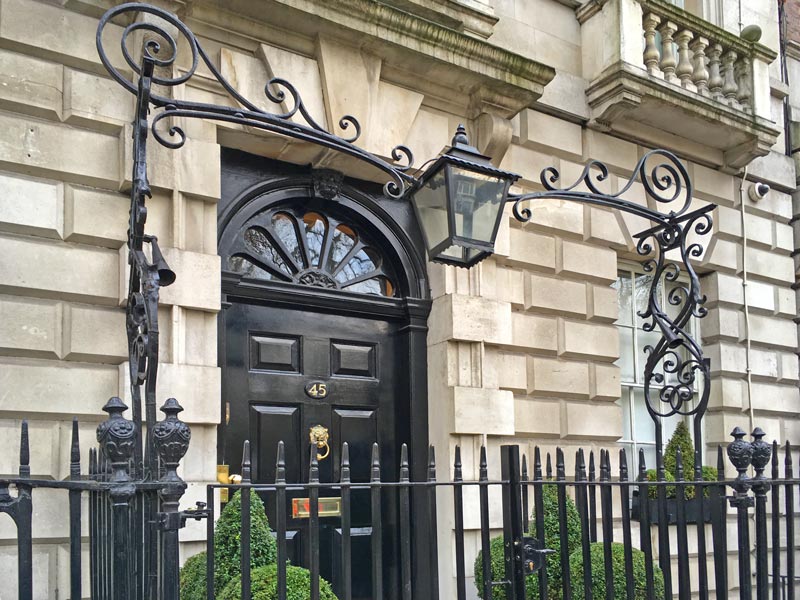

The first gas lamps
The first exterior gas lighting was in Birmingham in 1802, which provided more light than a lantern and its maintenance also was cheaper. The first street lighting with gas was demonstrated in Pall Mall in London in 1807 which was an experiment. After that, gas lighting soon spread in Europe’s biggest towns. One of Hungary’s senior statesmen, Count Széchenyi saw street lighting in London in 1815 already and wanted to install gas lamps on his estate in Nagycenk, however, he only managed that in 1840. Pest and Buda were lit by gas lamps in 1816. All in all street lighting was a success as towns became safer and the number of crimes decreased.
Early Gas Lamps
When constructing a lamp, its structure and size had to consider that oxygen was needed for burning, therefore it had to have an open part, and a chimney was needed so that the flume could escape and the material had to withstand the heat that was generated by the burner.
The early gas lamps were square glazed boxes with 4 pieces on top as the roof. They had a central chimney and the bottom was open in order to let the air in. The lamps were made mainly of copper, as it was a material easy enough to form, plus it did not rust in the rain. In the Victorian times, the roof of the lamps were made of glass. Early lamps can be spotted easily as one of their distinctive feature is that the bottom corners of the frame known as the ’frog’ was turned outwards. Later, frogs turned inside to allow more room for the lamp lighters. Early lamps had numerous models: Nicheroy, York, Victoria, Metropole etc.

Large Lanterns
The next type of gas lamps are called Large Lanterns. What is noteworthy to know is that they were hexagonal or octagonal sometimes Dodecagon (12 sided). The name large spoke for itself: these lanterns were built indeed large so that the frame could stand the heat generated by the multi flame burner. These lanterns remind me of Morocco, I think they have a slight oriental feeling. The most common models were the Westminster and Lambeth.
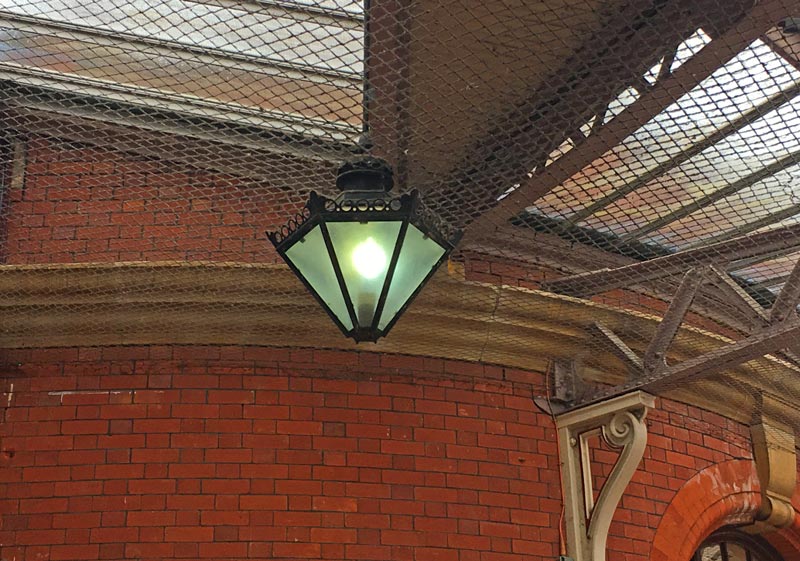
The Windsor Lamp
The most common gas lamp was the Windsor lamp which got its name from Windsor where it was first erected. The Windsor lamp too had several models: there were models with and without a frog, and the bottom was either open or closed. In case of the latter the lamplighter only had to open a lever to put the light on. The chimney had a cap to protect it from the rain. (I love these details and the fact everything has a function.)

Royal Lamps
Royal lamps are special and they have a tassled cushion with the royal crown on top. These lamps are to be found on royal premises such as Buckingham Palace, Windsor Castle, at the Royal Pavilion in Brighton etc. There is a special lamp in Windsor castle: the lamp is octagonal but only has 4 ribs.
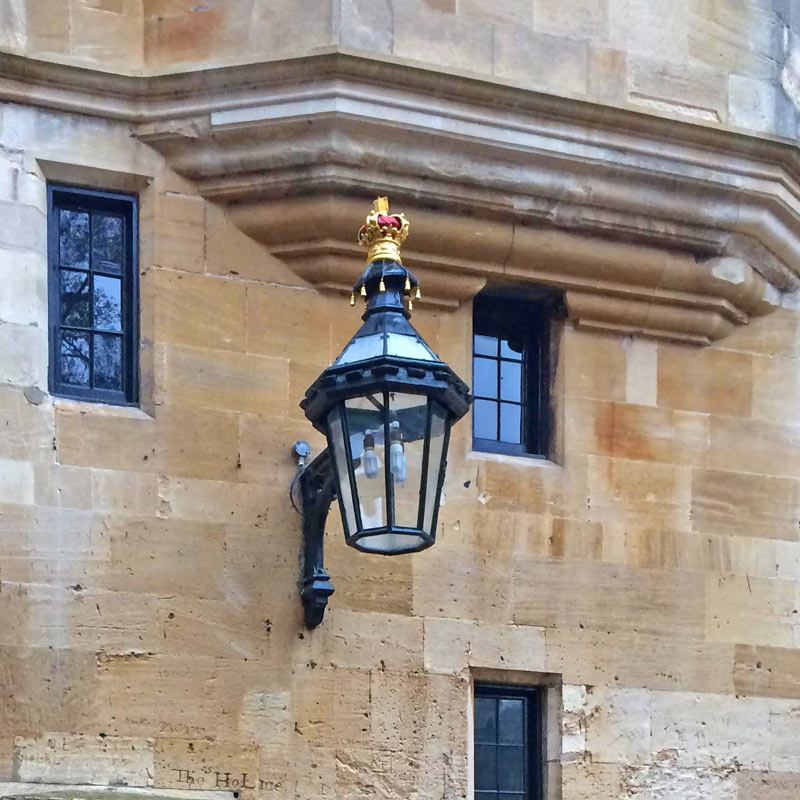
Rochester & Littleton
The next big group is the Rochester and Littleton lamps, which provided shadow-less light due to its frame-less mantle. They had an upright model and a wall bracket model, all of which had several designs, which created confusion over the model names!
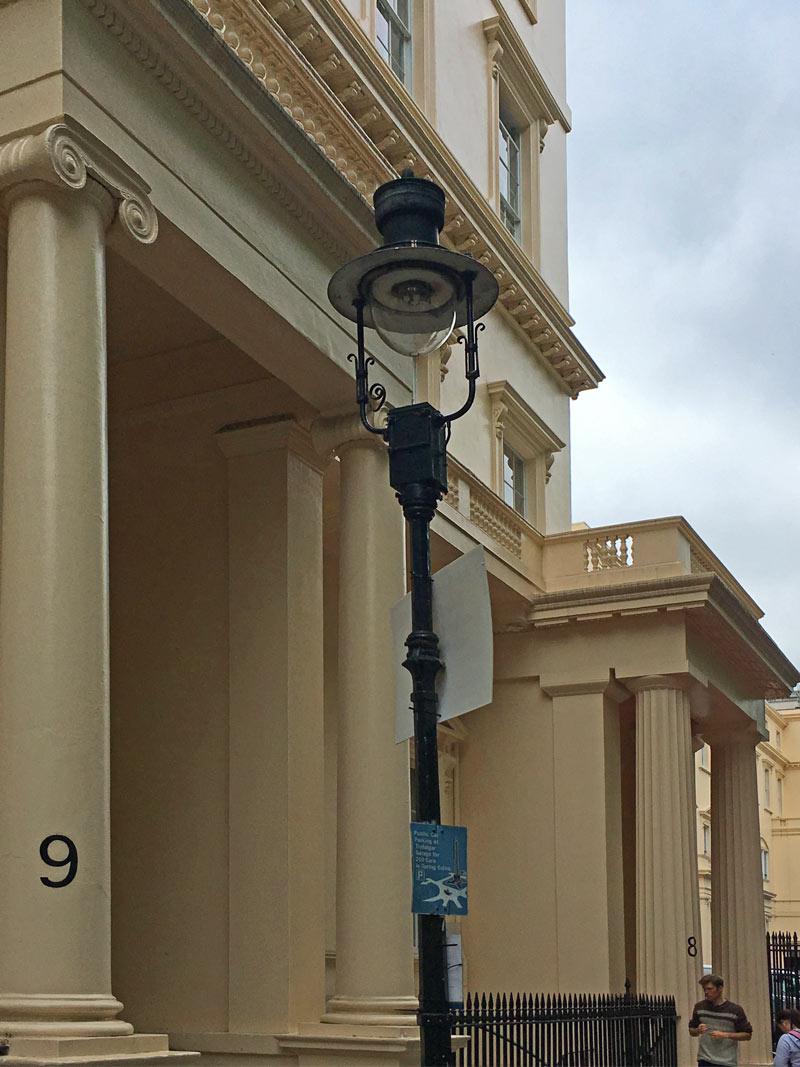

Sewage Lamp
There is another very interesting gas lamp which has to be mentioned. It is the Webb-patent lamp from the 19th century and is also known as sewer gas lamp. It was designed to burn off smells and germs from sewer systems. The sewers underground had an inverted gully (dome) running along the top to collect the methane gas and direct it towards the gas lamp above ground. As a result the lamp was lit up 24/7. The last existing sewer gas lamp in London is in Carting Lane in Savoy and is protected by the City of Westminster. Having said that as I was going through my photos, I realized I took a photo of a similar lamp in Winchester. I believe this is too a sewer gas lamp.
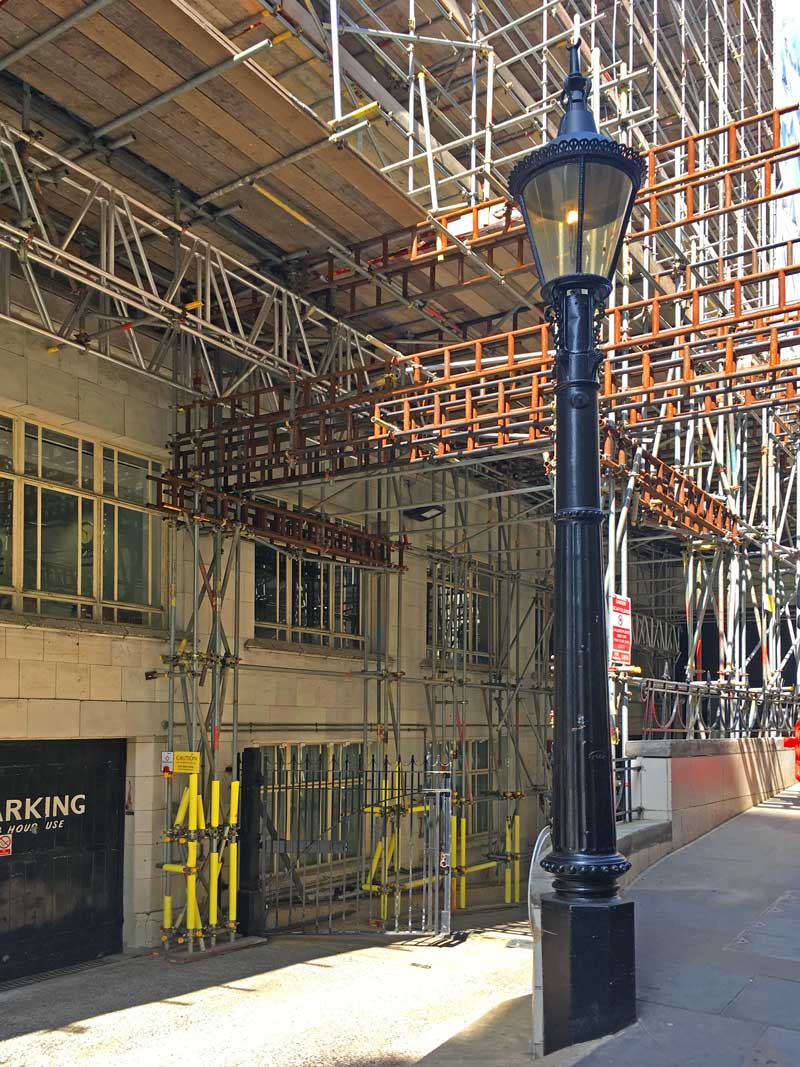

Dolphin Lamp
What definitely has to be mentioned is the Dolphin lamps on the Victoria and Albert Embankment, however, these street lamps were originally electric. There are two dolphins or sturgeons curled around the base of the lamp post and the lamp has an opaque white globe. In 1860 the decision was made to light the embankments with electric lights and the Metropolitan Board of Works asked to submit designs. The successful architect’s called George John Vulliamy’s design was based on the statues of the Fontana del Nettuno in Rome and can be seen in several places in London, for example at Buckingham Palace. Vulliamy also designed the benches for the embankments with cast iron ends in a form of sphinxes, which you can see on my Instagram. These lamps were electric lights and used electric Yablochkov candles which were inefficient and were replaced by gas lights in 1884. They were converted back to electricity in 1900. These lamps are Grade II listed.

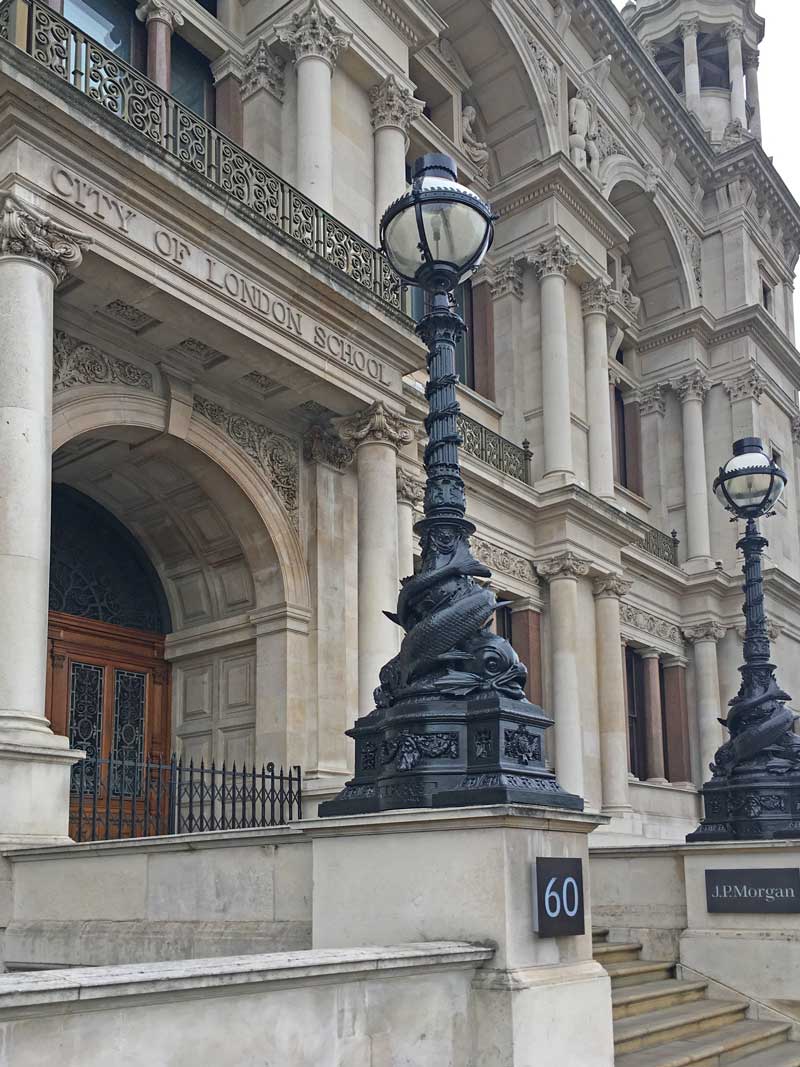
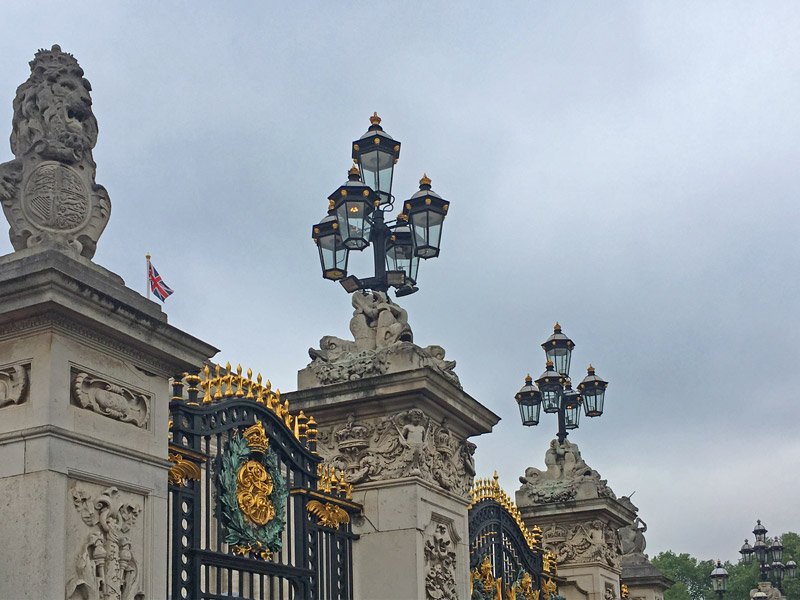
buckingham-gas-lamps
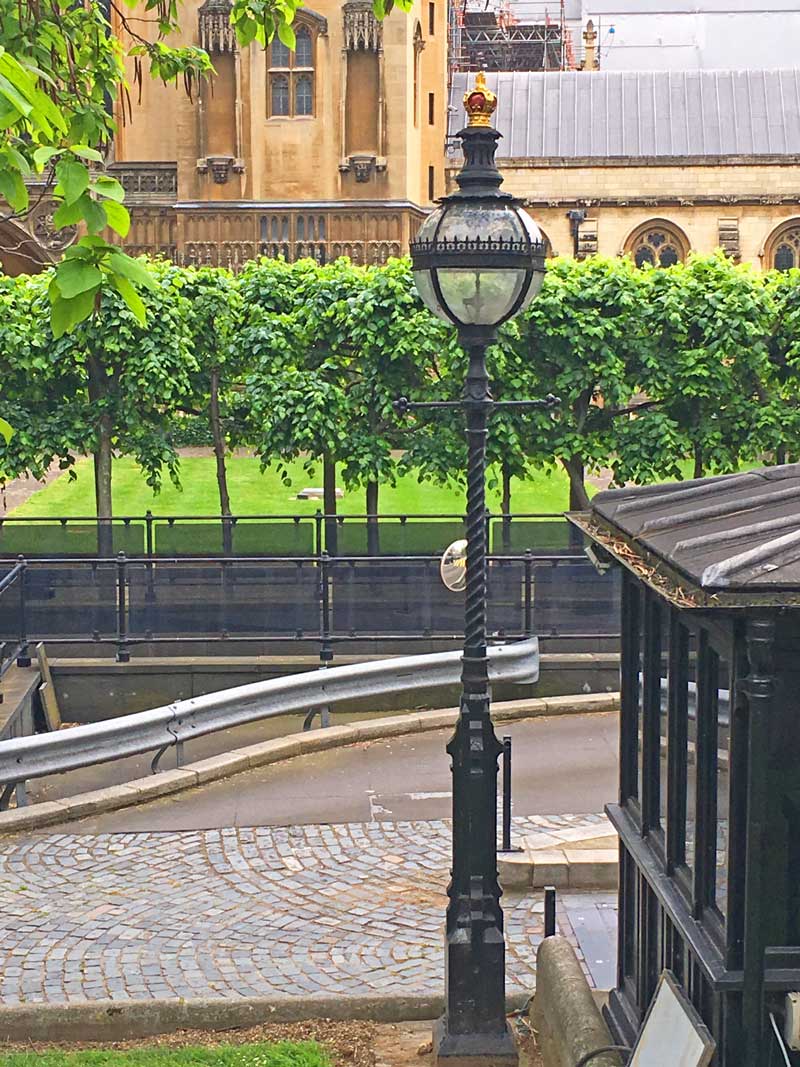

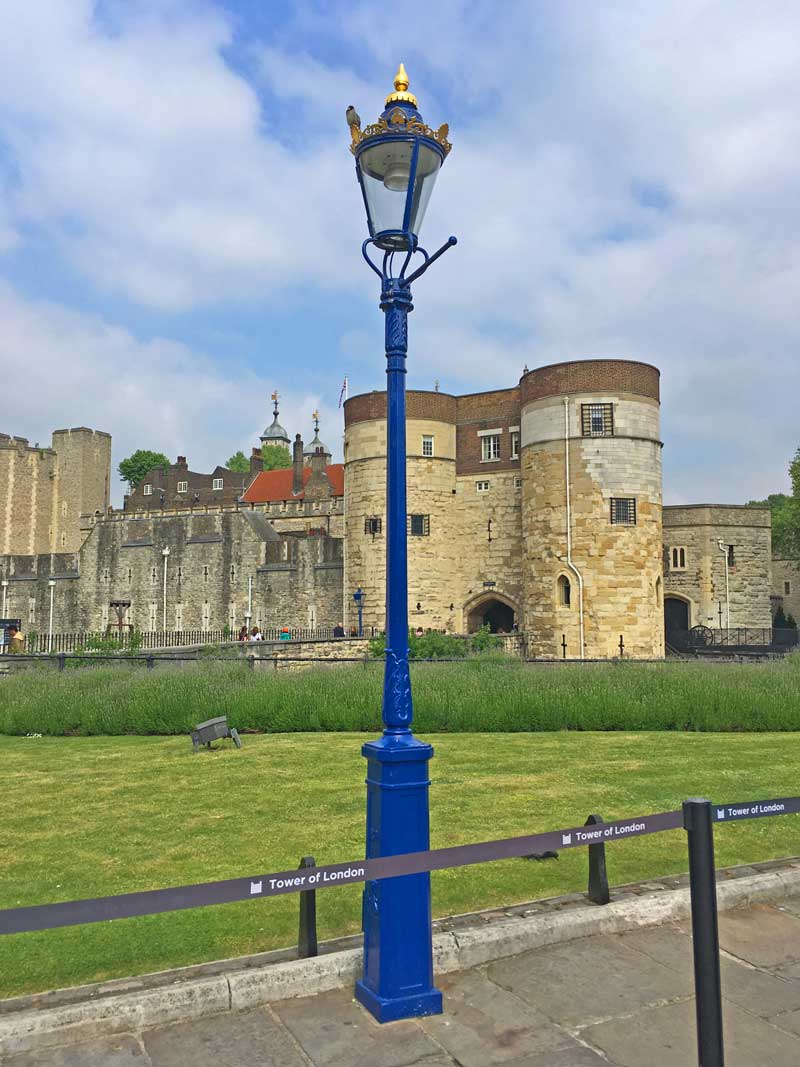
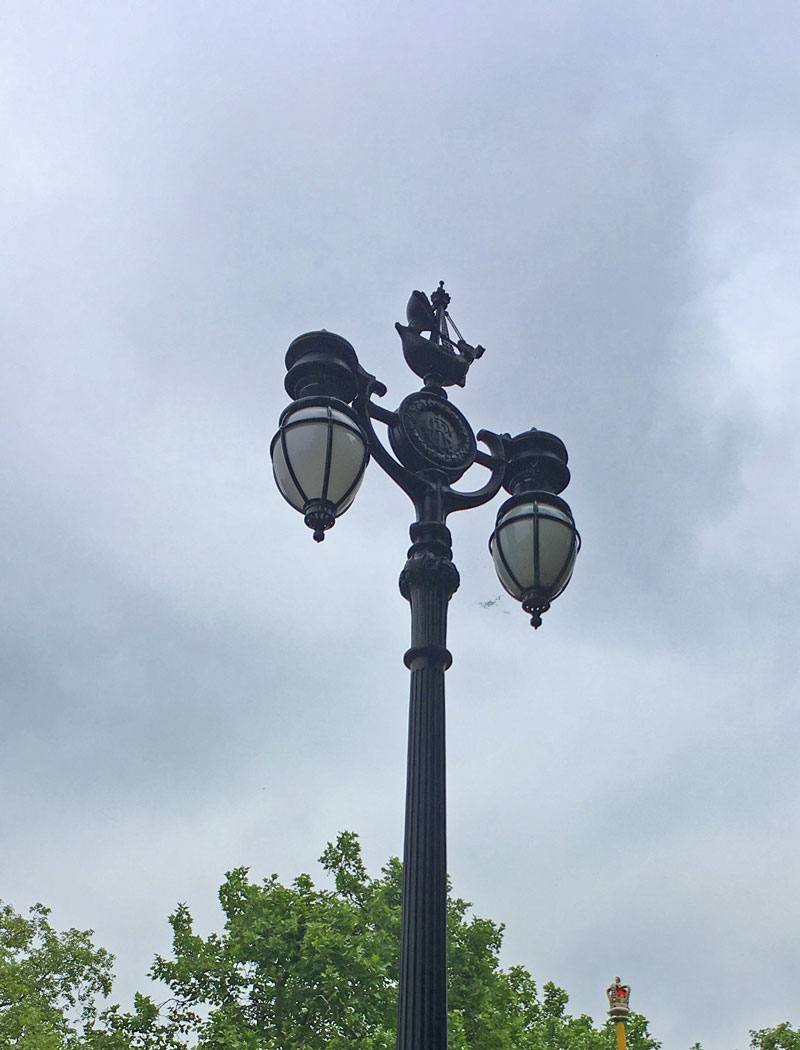
~
So do you agree with me that these old lamps are a Real Gas! No doubt I will be finding more on my travels around the UK, so keep following my Instagram and Pinterest and see what beautiful designs there are.
PS: If you would like to see more street lamps, please visit my Pinterest site.




Fascinating to read about all the different types and their history – I had no idea!
I’m intrigued by some of the other titles in your blog and will definitely have to wade through some of your extensive smorgasbord of topics on offer.
I’m probably being thick, but is there a way to ‘subscribe’ to your blog and receive notification when it’s updated?
Keep up the good work!
Phil
Thank you, Phil, I am really glad you find my blog interesting, it means a lot. I did have a Subscribe button but to be honest, I did not realise I removed it last time I reworked the layout of the blog… Please, give me some time – I am going to rework the blog very soon (until the end of this year) and I am going to add the Subscribe button again – even if nobody wants to subscribe apart from you! 🙂 Again thank you, Gizella
There’s a working gas lamp in Kings Road, Alton, Hants which used to run on sewer gas. It’s Grade II listed.
Oh thank you, Basil! I’m going to check it out asap.